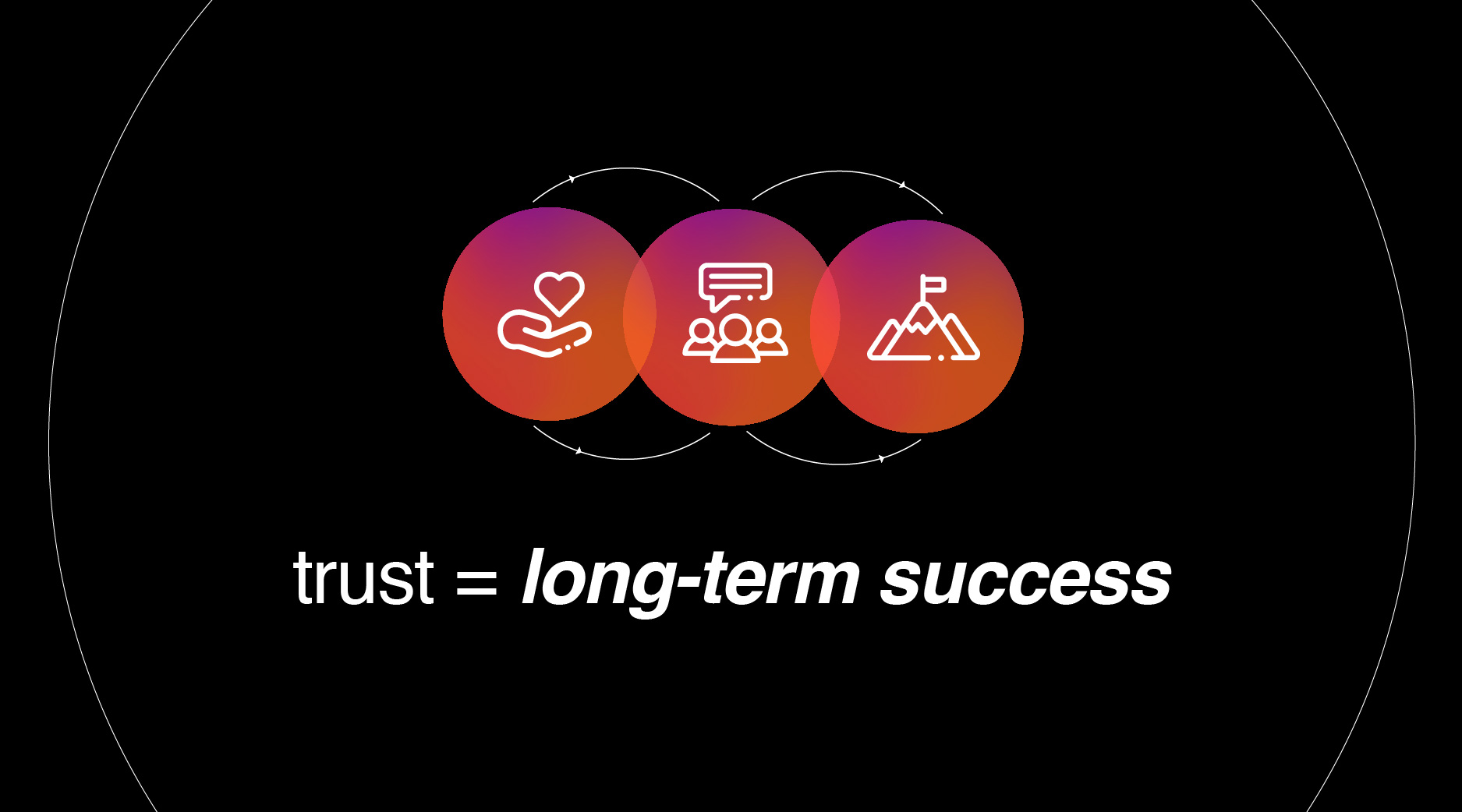Let’s all just get this out of the way: 2020 was not our best year collectively. From a global pandemic, the overwhelmingly incorrect use of the phrase “unprecedented,” social and political unrest, massive raging fires, and all of the other headlines we couldn’t bear to read – there are a lot of reasons to look forward to moving forward. While we have a long road ahead of us in making progress on righting the wrongs within our society and combatting a deadly virus, there is always some hope to be found in closing out a year and beginning a new one.
Nothing will be magically better on January 1st. We do not go back to the old normal, but we do get to look forward, refresh, and refocus on what’s important to us.
Hopefully, if you’re here, it’s because one of the things that is important to you is delivering killer customer-centric experiences.
Here’s our take on where the most successful marketing leaders will be pushing their organizations in 2021:
1. Trend: Digital isn’t a channel, it’s a core component of your brand
If 2020 taught us anything, it’s that the way we do business is radically changing. Not only do consumers expect to be able to engage with your brand in real-time from wherever they are, they expect that experience to feel seamless across channels. Like being able to consult virtually, build a list online and bring it into a retail location for purchase. Or choosing between shipping, delivery, and pickup options for your products, finding the tools and expertise they need from your content to make purchasing decisions, troubleshoot issues, and even learn how to use your products. Fact is, they expect you to serve it all up.
And doing that starts by focusing on:
- Developing seamless human-centric online experiences
- Integrating eCommerce and storefront
- Leveraging digital-story telling tools to connect with customers beyond IRL interactions
- Dedicating investment into accessible online spaces for people of all abilities
2. Trend: Brand Activism
While many millennial and Gen Z consumers have been aligning their buying decisions with brands that exemplify their values for many years now, this year has been one for the books in terms of consumers demanding corporate consciousness.
Consumers have a heightened awareness of social and environmental issues and they expect the brands they consume to care deeply about them too. In fact, according to Accenture Strategy’s research report “From Me to We: The Rise of the Purpose-led Brand,” 63% of consumers prefer to reward companies that are willing to take a stand on current issues.
It can feel uncomfortable as a brand that represents the viewpoints of many unique individuals within your company walls and serves many unique customers to take a hard stance, so much so that 83.3% of marketing leaders believe that taking a stand on issues would improve their ability to attract and retain customers, but only 18.9% think it’s appropriate to do so. With all of these conflicting feelings this can be a hard conversation to have within your conference rooms and Zoom chats.
Consider these tips:
- Look at your brand’s mission, values and code of ethics and live those beliefs.
- Focus on action over words. Major fall-out from consumers occurs when companies speak out while maintaining harmful practices.
- Analyze your audience and target customers and focus on amplifying your reach to them versus trying to prevent alienating outliers.
- Back your recommendations with stats. There are tons of studies around the pros and cons of being vocal or silent.
- Consult your employees. Brand activism has shown significant lift in employee engagement.
- Above all else, be genuine.
3. Trend: Tracking Beyond Cookies
We have talked on the blog before about the evolving theology and legal considerations of privacy as a right with some countries taking stricter stances on what can be tracked about an individual, how it can be stored and used, and what rights they have to request the information be provided to them or removed all together. But we haven’t delved deeply into the evolving world of cookies.
Cookies, if you aren’t familiar, are small bits of data stored on a user’s computer by their web browser.
In the last couple of years we have seen several companies, especially global companies, adopt blanket explicit consent for cookie tracking across their sites to meet the legal requirements of the strictest governing bodies.
Google plans to stop supporting third-party cookies for Chrome browsers starting in early 2022, which will massively alter the way digital media is targeted, tracked, reported and optimized. Prioritizing that ever valuable first-party data will be key.
And while first-party cookies are safe for now in most regions, we anticipate that preparing for how we identify and track users beyond cookies and redefine ROI and attribution will be a big part of the discussions for marketers and analysts in 2021 and beyond.
The companies that plan early will be the ones that manage this transition the smoothest.
Related: Data Privacy – What It Means for Marketers
4. Trend: Predictive and Prescriptive Analytics
The market value of predictive and prescriptive analytics are expected to nearly triple in the next decade as business leaders become more and more reliant on leveraging data to make decisions.
Big Data has been a major focal point of conversation among companies for a better half of a decade now, and while analytics and development teams have been hard at work building data lakes and other flexible storage systems along with predictive sales models, marketers have been clawing at how to activate upon that rich data within the systems they use day-in and day out.
We expect to see a major shift in 2021 in terms of alignment of goals between analysts and marketers for leveraging data and impacting customer outcomes. As a result, we will see stronger partnerships develop in which analysts can leverage predictive models for what is most likely to happen and prescriptive recommendations based on trends for how marketers can influence those outcomes.
In order to activate on these models, data storage solutions will likely be redesigned focusing on real-time integrations with the marketing activation tools.
The marketing teams who are solely relying on descriptive analytics, or data that explains what has happened, to inform their next campaign will struggle to meet the returns of those marketers who are leveraging predictive and prescriptive analytics to observe and anticipate trends and ways to capitalize on them to drive greater return.
Now What?
So now that we shared our thoughts on whats we see coming in 2021, you might be a bit overwhelmed about what B2B marketers need to do. We know each of these four trends requires a lot planning before any action can take place. Consider revisiting your strategic plan for next year with these trends in mind, and start thinking about how you can weave them into various aspects of your organization. Share these trends with your leadership teams and get the conversation going so everyone can start thinking about how this may look like across the entire organization. This step alone can inspire ideas and drive action.





